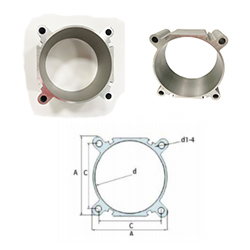As we step into 2020, investing in a home solar electricity system has become a no-brainer for numerous compelling reasons. The most significant factor is the steep decline in the price of solar equipment, including panels, which has drastically reduced the initial capital investment required. This affordability makes solar energy accessible to a broader range of homeowners.
Adding to the appeal, the Government of India provides substantial subsidies to encourage solar adoption. State-level agencies also offer additional incentives depending on the region. In special category states such as those in the Northeast, Jammu & Kashmir, Uttarakhand, Himachal Pradesh, Sikkim, and Lakshadweep, the subsidy can reach up to 70%. For grid-connected systems where excess power is fed back into the grid, the Ministry of New and Renewable Energy (MNRE) provides a higher subsidy than the standard 30%.
Beyond the financial benefits, there are other incentives like generation-based incentives. To further motivate households, banks are encouraged to treat solar installations as home improvements, offering loans at the same favorable rates as traditional home loans. Many Public Sector Banks have already communicated this policy shift to their branches.
While it may seem daunting at first, setting up a solar system is relatively straightforward. The MNRE only grants subsidies for locally produced solar panels. Once your location is assessed, the entire setup can be completed within a few days by a reputable vendor like Genus, who will guide you through the process and ensure you receive authentic equipment. Generally, for a 1 KW installation, you’ll need around 10 square meters of shadow-free area. Factors such as appliance load, local weather, solar radiation levels, and roof angle will determine the exact size of your system.
If you lack sufficient roof space or face shading issues, ground-mounted options are available as well. Before committing to a vendor, you might wonder about the payback period. Compared to the 25-year lifespan of a solar installation, the return on investment is surprisingly quick. Even if you move before the system's lifetime ends, the property value increases with the installation. According to a study conducted in major cities of Madhya Pradesh, under typical weather conditions and with the 30% central government subsidy, a 5 KW system reaches its break-even point in 4-5 years (7 years for a 3 KW system). Without any subsidy, the break-even still occurs within 6-7 years.
When deciding between off-grid and grid-connected systems, both have their merits. An off-grid system is ideal for areas with frequent and prolonged power cuts, providing uninterrupted power. However, it requires a battery storage system, which adds to costs and necessitates periodic replacements. On the other hand, grid-connected systems don’t need batteries since the utility grid acts as your backup. With net metering, any surplus power you generate can be sold back to the grid, effectively reducing your electricity bill. This setup isn’t suitable for areas prone to power outages.
For those hesitant about upfront expenses, consider partnering with a Renewable Energy Service Company (RESCO). These companies handle installation and maintenance while you pay a fixed rate per unit of electricity consumed. The RESCO profits from selling excess power to the utility grid.
To learn more, visit Genus or consult with a certified installer to find the best solution tailored to your needs.
This transformation in renewable energy adoption is not just about saving money—it’s about contributing to a sustainable future.
SAI Pneumatic Cylinder Barrel
Standard
Pneumatic Cylinder, double rod, 200mm bore, 500mm stroke, medium carbon steel rod, TPU seals material, with magnet, G thread type
Airtac SAI cylinders are a functional replacement for the SMC C95 series cylinders.
Product Features:
1.ISO15552 (original ISO6431) standard cylinder;
Pneumatic Cylinder Barrel.
2.The piston seal is composed of two Y-shape one-way seal structure, which has compensation function, long service life and low start-up pressure;
3.The aluminum pipe without tie rod has good corrosion resistance;
4.The buffer adjustment of cylinder is smooth and steady;
5.Cylinders and accessories for installation with several specifications are optional.Pneumatic Cylinder.

Mickey type aluminum cylinder refers to an aluminum alloy cylinder designed with a special structure. The "Mickey type" here usually refers to a reinforced rib structure inside or outside the Cylinder Barrel, similar to the shape of the Chinese character "rice". This structure can increase the overall rigidity and stability of the cylinder barrel, while reducing weight, making it more suitable for applications that require high weight and strength.
The characteristics of Mickey type aluminum cylinder may include:
Lightweight: By optimizing the structure to reduce material usage, the overall weight can be reduced.
High strength: The special reinforcement design can improve the load-bearing capacity of the cylinder.
Corrosion resistance: Aluminum alloy material itself has good corrosion resistance.
High precision machining: In order to ensure the normal operation of the cylinder, precision machining is usually required to achieve the required dimensional accuracy.
This type of cylinder barrel is widely used in various mechanical equipment, such as automation equipment, pneumatic tools, industrial robotic arms, etc. If you need specific information about the rice shaped aluminum cylinder tube product, we recommend that you consult relevant suppliers or manufacturers, who can provide detailed specifications and technical support.
SAI Pneumatic Cylinder Barrel,SAI Pneumatic Cylinder Tube,SAI Pneumatic Cylinder Tubing,SAI Pneumatic Cylinder Pipe
Foshan Weiyingjia Technology Co., Ltd , https://www.wyspneumatic.com
